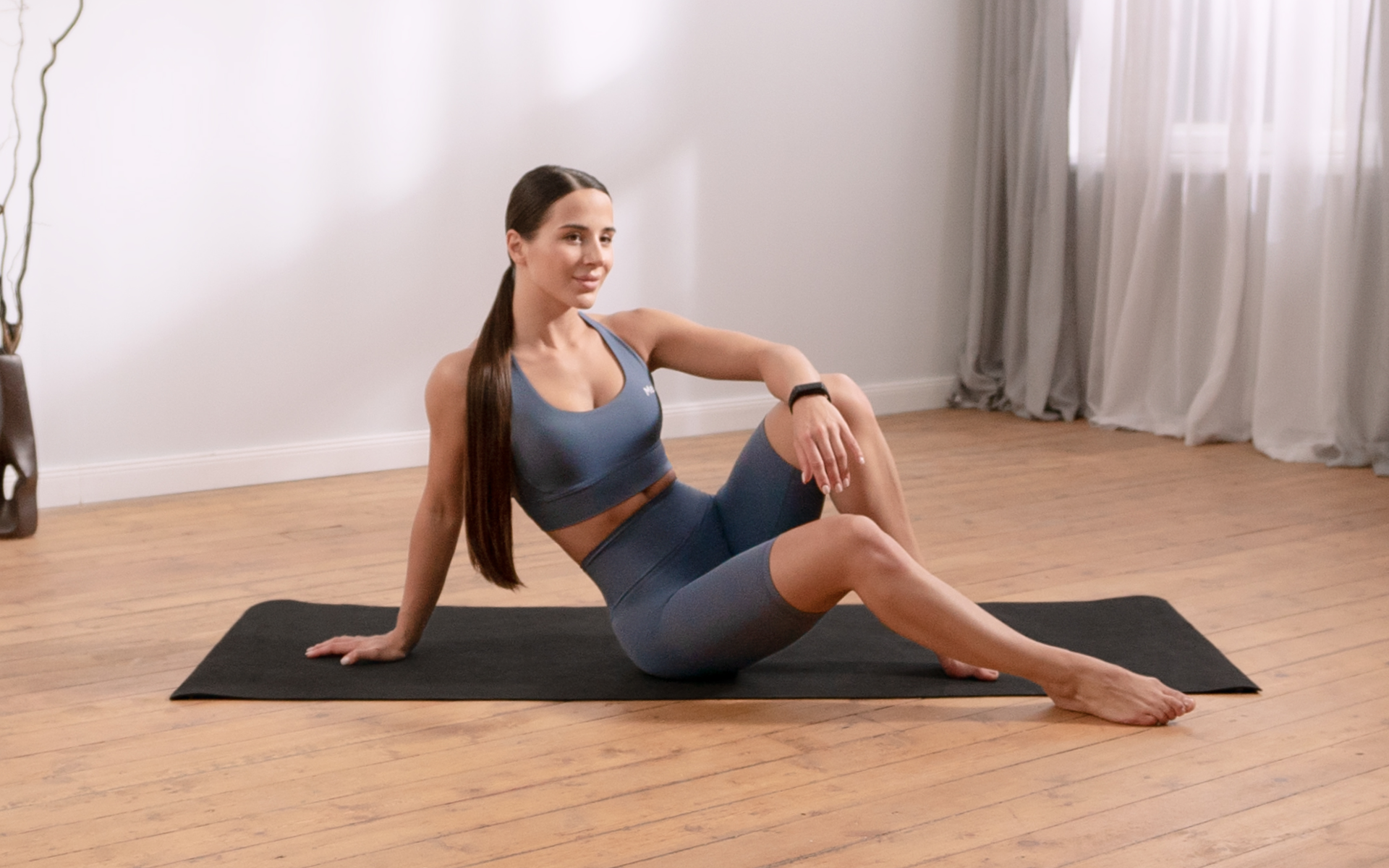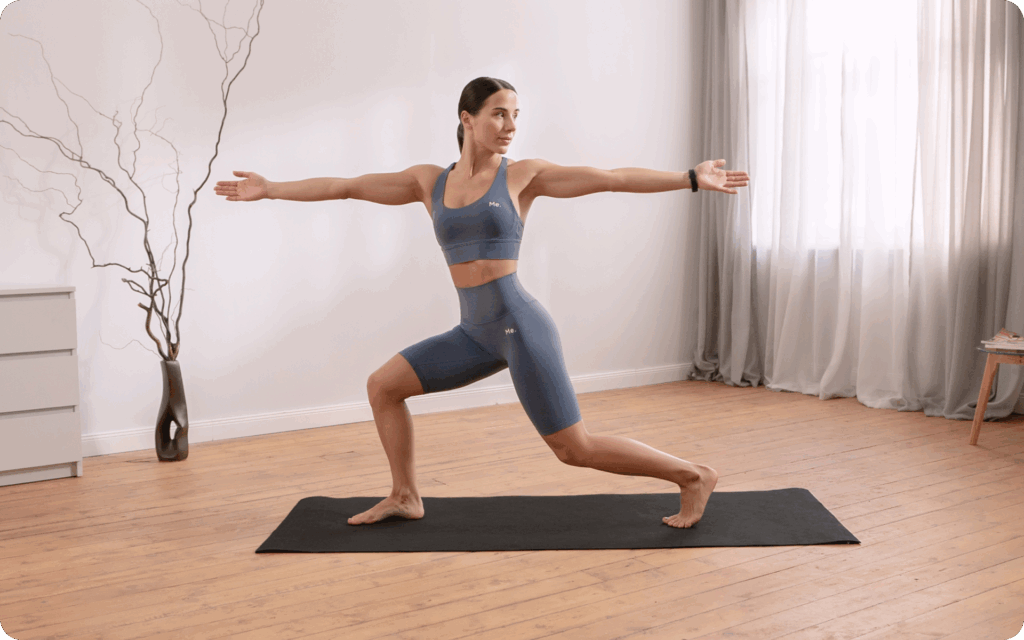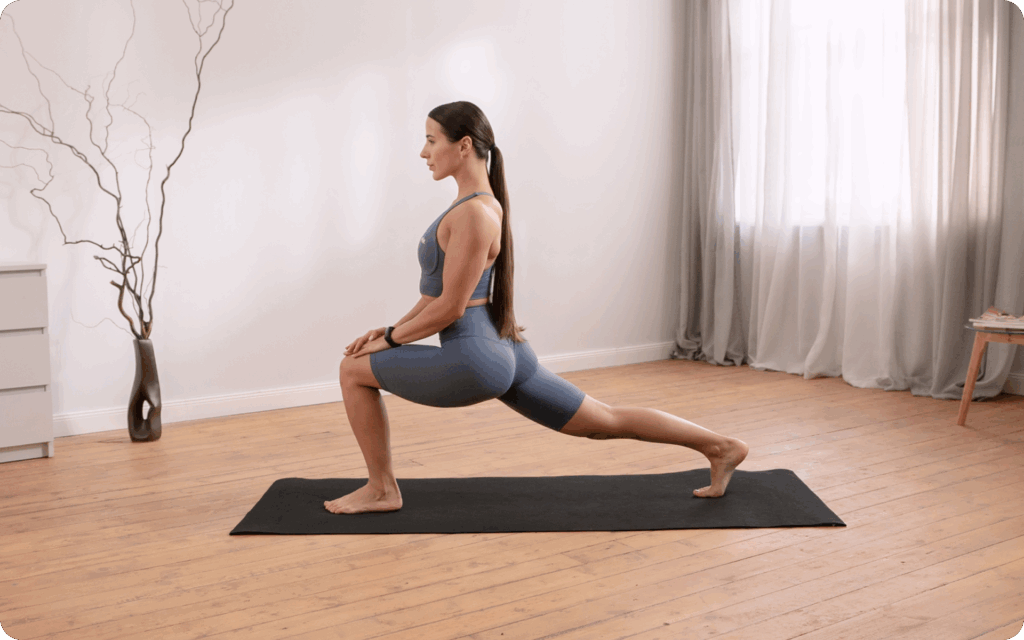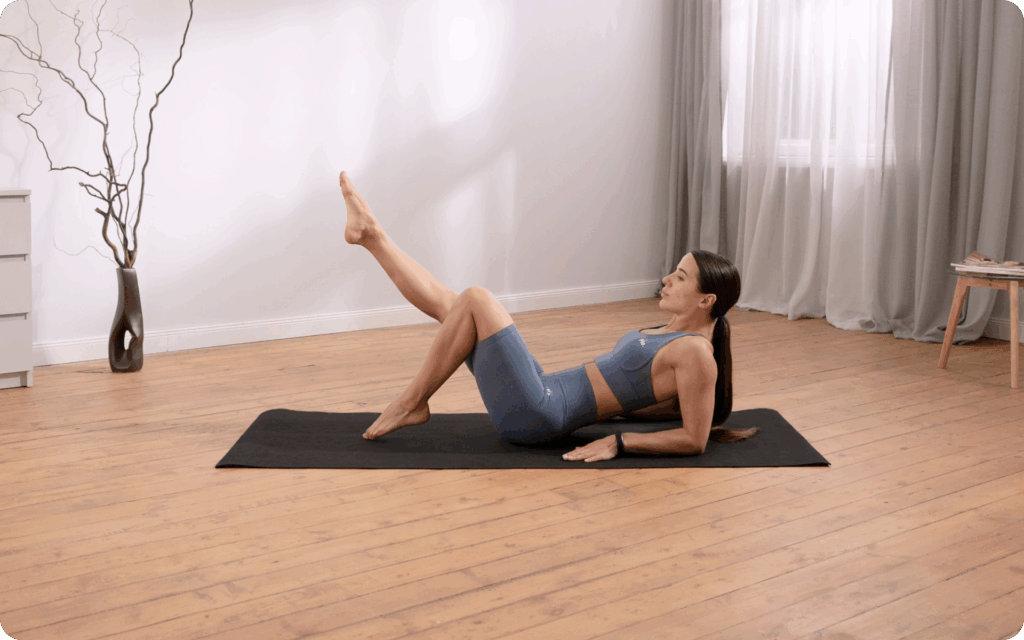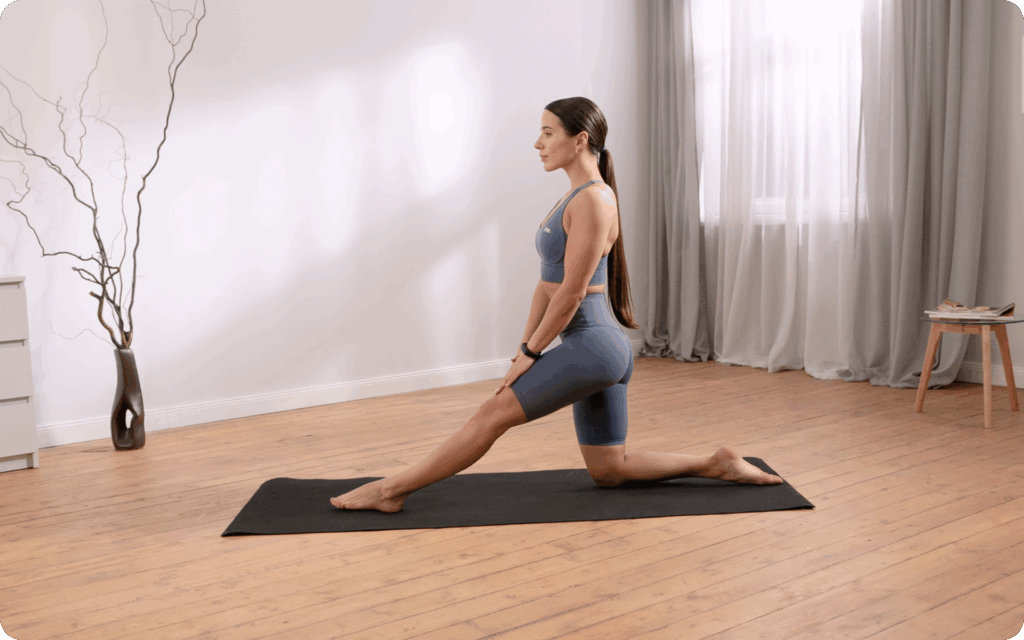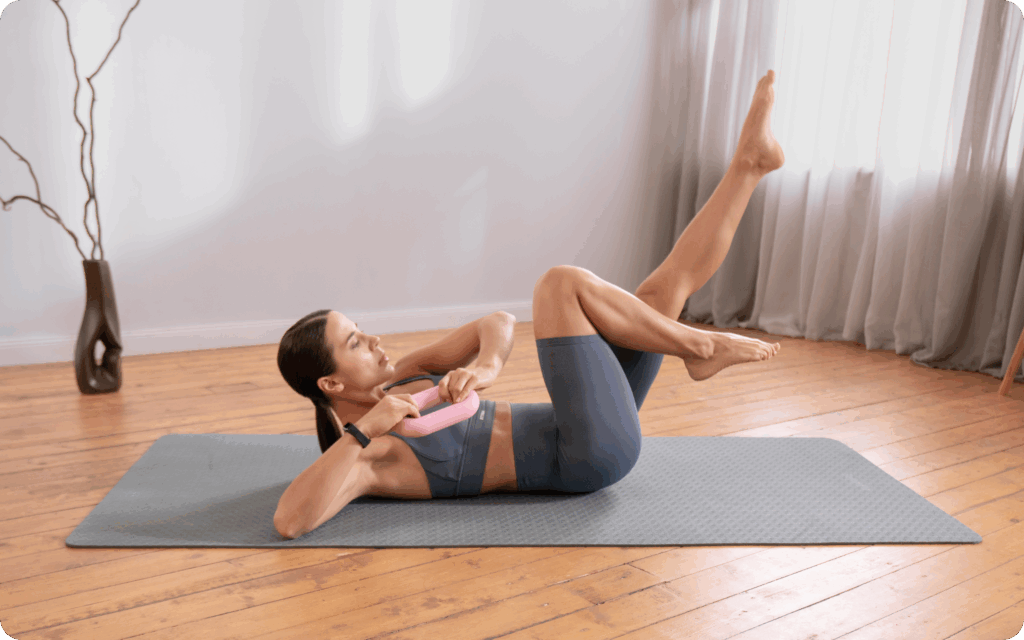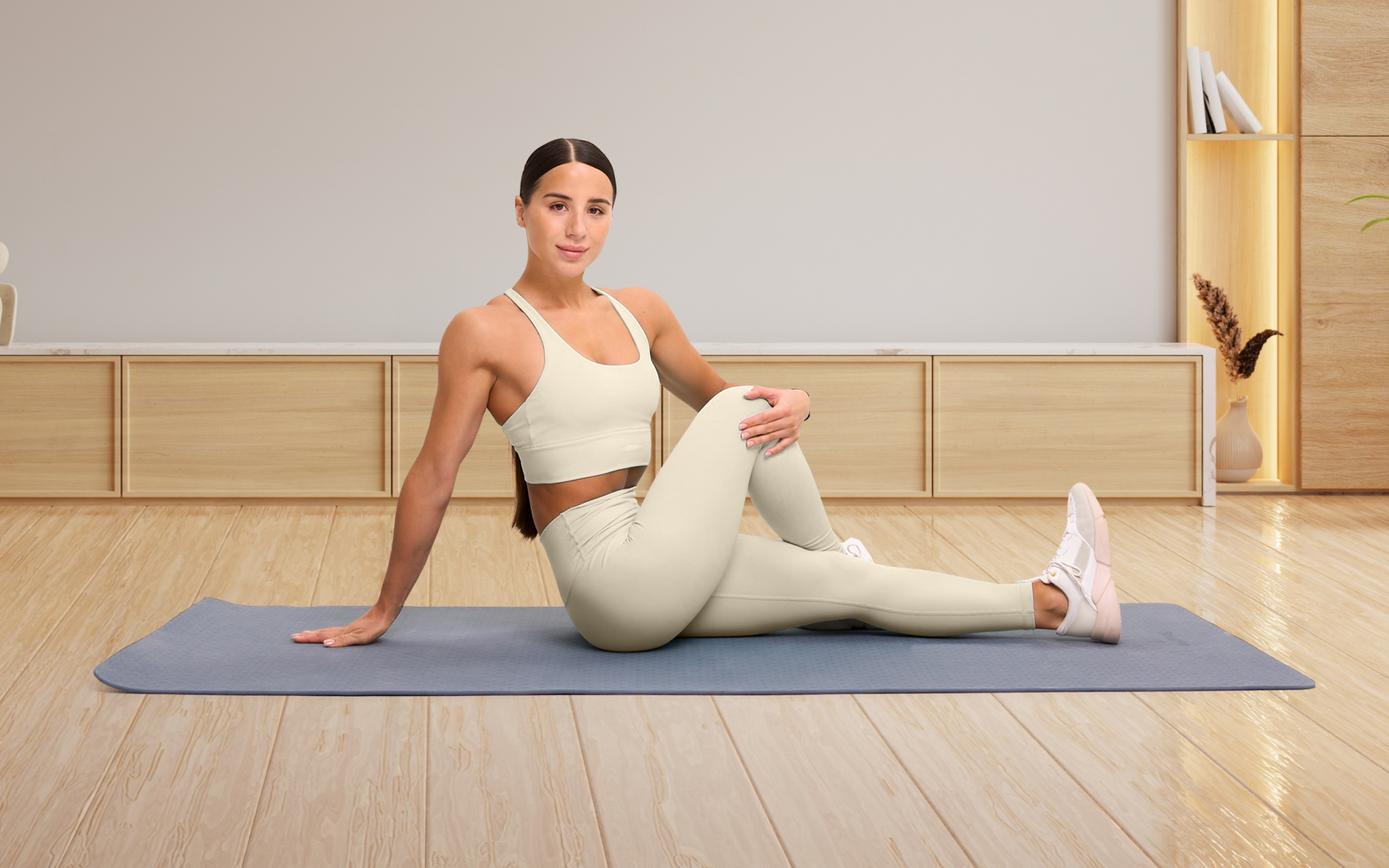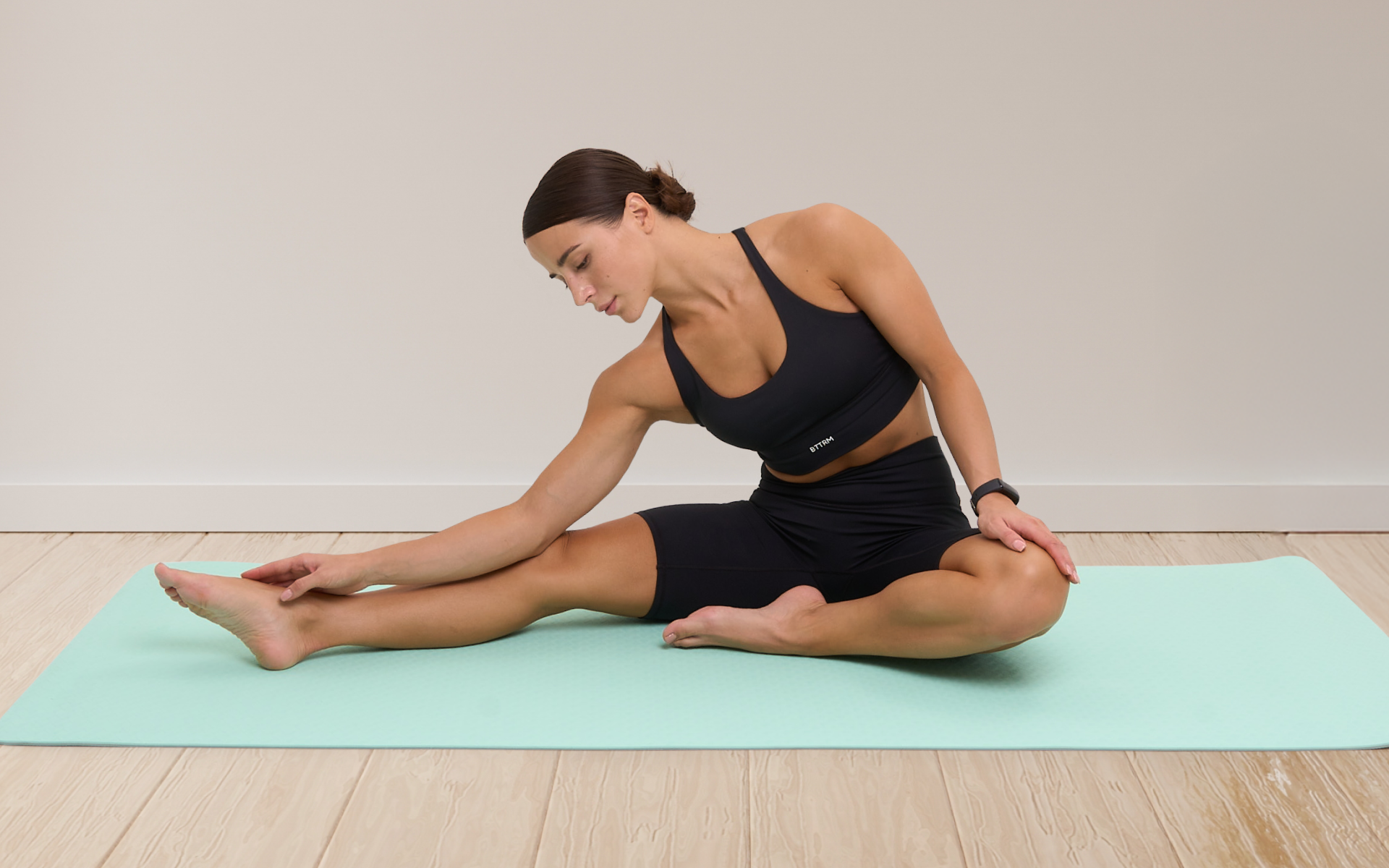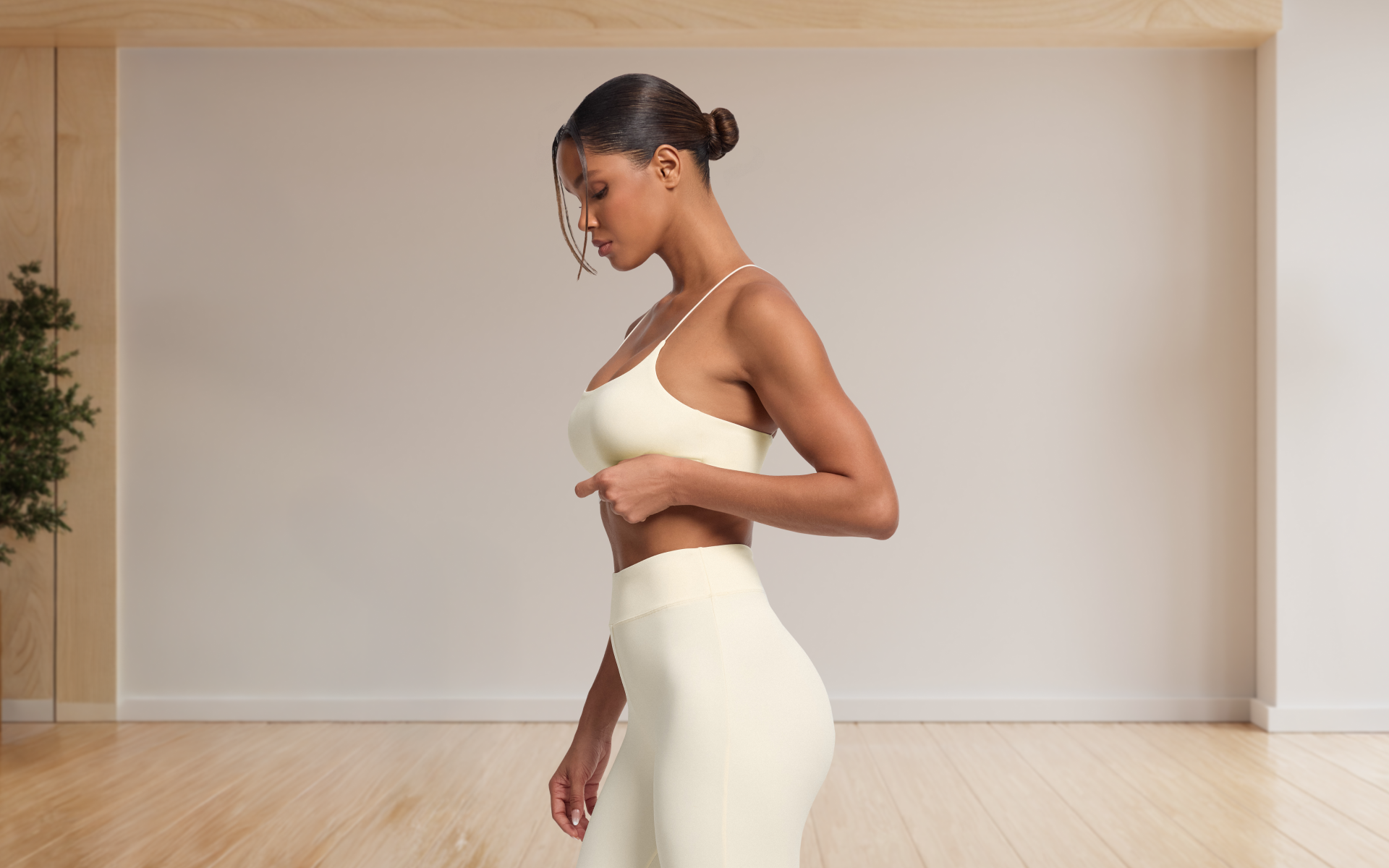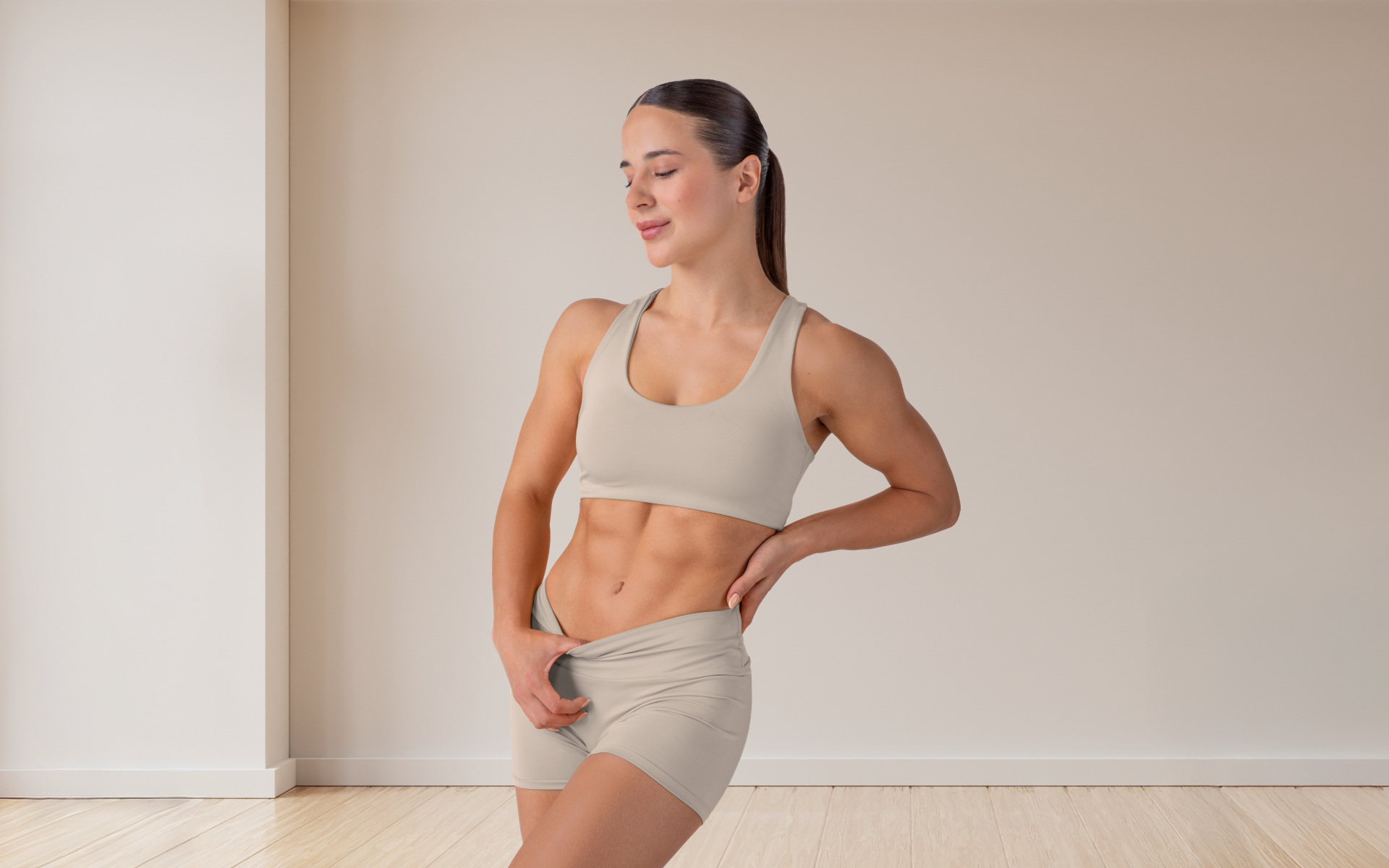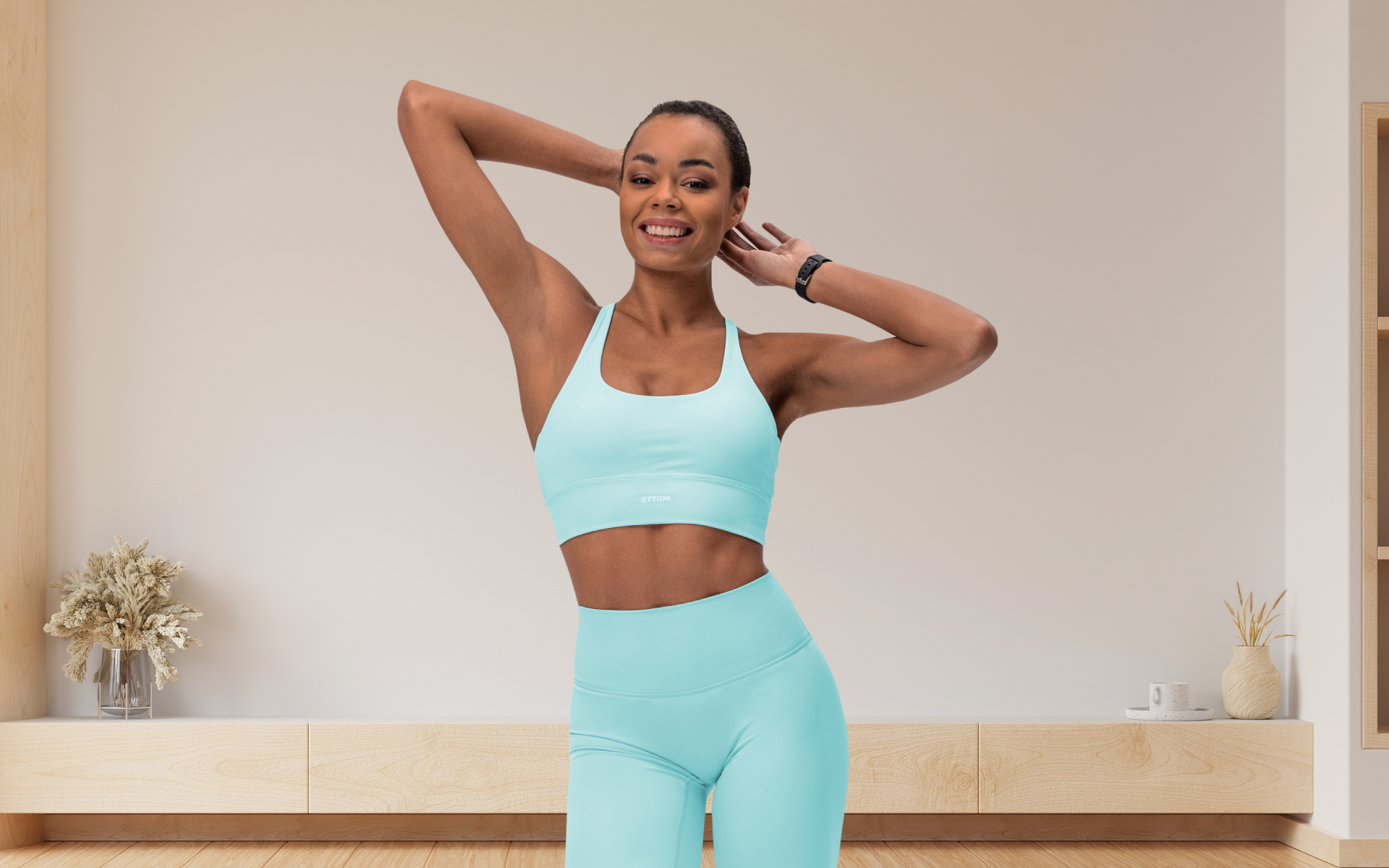Modern life often impairs our physical fitness. We sit for hours, losing the natural flexibility and strength we were born to have.
Joseph Pilates, the creator of the Pilates method (which he called “Contrology”), recognized this problem back in the early 20th century. He believed that to achieve true happiness, one must first attain physical fitness, a uniformly developed body paired with a sound mind.
While the practice has evolved to include equipment such as the reformer, Joseph Pilates built the original Pilates foundation on a simple mat.
This post will explore the core of Joseph Pilates’ original method: mat Pilates.
We will examine what it does for the body, its numerous benefits, and provide a series of foundational exercises you can practice at home to begin your own journey toward improved fitness and well-being.
Is Mat Pilates Strength Or Cardio?
Mat Pilates is primarily a form of strength training, but it can offer cardiovascular benefits, depending on the session’s intensity and flow.
To better understand these benefits, let’s define “strength” and “cardio.”
- Cardiovascular exercise, or “cardio,” is any activity that raises your heart rate and breathing for a sustained period. The American Heart Association recommends at least 150 minutes of moderate-intensity or 75 minutes of vigorous-intensity aerobic activity per week for optimal health (1).
- Strength training involves using resistance to induce muscular contraction, which builds the strength, anaerobic endurance, and size of skeletal muscles. The American College of Sports Medicine (ACSM) recommends adults perform strength-training activities at least 2 days per week (2).
Mat Pilates definitely meets the criteria for strength training.
It uses your body weight as resistance to challenge your muscles, particularly your core.
While a traditional, slow-paced Mat Pilates class may not elevate your heart rate enough to count as moderate-intensity cardio, a more dynamic or complex session (like reformer Pilates) might (3).
For a comprehensive fitness routine, it’s best to combine Mat Pilates with dedicated cardiovascular activities like running, swimming, or cycling (4). This variety of exercises ensures you meet the recommended guidelines for both strength and cardio, leading to well-rounded physical health (4).
Is Mat Pilates Good For Your Body?
Yes, research confirms that Mat Pilates is perfect for your body. Numerous studies have documented its positive effects on everything from core strength to mental well-being (5, 6).
For example, a study published in the Journal of Sustainable Welfare found that participants (who were 55 and older) who practiced Mat Pilates for 12 weeks showed significant improvements in:
- Abdominal endurance
- Flexibility
- Balance (7).
Another study highlighted its effectiveness in reducing chronic lower back pain by strengthening the deep core muscles that support the spine, especially compared with doing no exercise at all (8).
BetterMe: Health Coaching app helps you achieve your body goals with ease and efficiency by helping to choose proper meal plans and effective workouts. Start using our app and you will see good results in a short time.
These modern scientific findings support what Joseph Pilates claimed decades ago: his method develops the body uniformly and restores physical vitality.
By focusing on precise movements and controlled breathing, Mat Pilates trains the body to function more efficiently and with greater ease (5).
What Does Mat Pilates Do For Your Body?
Joseph Pilates designed his method to deliver a complete transformation of the body, mind, and spirit. He believed that by mastering your muscles, you could achieve holistic wellness.
Here’s a closer look at what Mat Pilates can do for you:
- Develops the Body Uniformly
Pilates emphasized balanced muscle development.
Many conventional exercise routines overdevelop some muscles while neglecting others, leading to imbalances that might contribute to injury.
Mat Pilates works the entire body, from the deep core muscles to the smaller stabilizers, ensuring no muscle group is left behind (9). This uniform development creates a strong, streamlined physique that is both functional and toned.
Modern life often forces us to be at a desk or on the phone for extended periods.
Mat Pilates directly counters this by strengthening the deep core and back muscles that support the spine (10). There is no “perfect posture”; however, the stronger and more mobile your body is, the less likely you are to experience injuries and pain (7).
Exercises like The Swan-Dive and The Shoulder Bridge encourage spinal extension and articulation, emphasizing movements opposite to those in sitting, which can help prevent and reduce pain and injuries. A stronger core can also provide the stable foundation your spine needs to remain upright, reducing strain and improving overall spinal health.
- Restores Physical Vitality
Do you often feel tired or sluggish? Like many types of exercise, Mat Pilates can help restore your energy levels. The practice improves circulation, enhances breathing efficiency, and builds muscular endurance (11).
As Joseph Pilates explained, the exercises strengthen the heart’s pumping, helping clear the metabolic “debris” that causes fatigue.
The result is a body that feels more energetic and less prone to fatigue. You develop what Pilates called a “tremendous reserve energy for sports, recreation, and emergencies (12).”
- Invigorates The Mind
Pilates isn’t just a physical workout; it’s a mental one, too.
This method requires intense concentration, as you must focus on:
- Your breath
- Your alignment
- The precise execution of each movement.
This mind-body connection is a core principle of “Contrology.”
By concentrating deeply, you train your mind to control your muscles with precision, which can reduce fear of movement in people with chronic low back pain (13).
This mental discipline might translate to improved focus and clarity in other areas of your life.
- Elevates the Spirit
By achieving physical fitness and mental clarity, you can experience a significant boost in your overall sense of well-being.
Joseph Pilates believed his method could elevate the spirit, leading to greater happiness and life satisfaction. When your body feels strong and your mind is clear, you are better equipped to handle life’s challenges with a positive outlook (11).
Read more: How to Lose Weight with Pilates: Complete Guide and Sample Workout
What Are The Main Benefits Of Mat Pilates?
The primary benefits of Mat Pilates extend beyond the physical improvements discussed above.
It is a holistic practice that nurtures the mind, body, and spirit.
So, what are the benefits of mat pilates for health?
1. Improved Core Strength And Stability
At the heart of Pilates is the concept of the “powerhouse,” the muscles of your core, including the abdomen, lower back, hips, and glutes.
Mat Pilates exercises can strengthen this powerhouse, creating a stable center from which all movement originates (14).
A strong core is essential for overall spinal health, balance, and preventing injuries (15).
2. Increased Flexibility And Mobility
While not as focused on deep stretching as yoga, Mat Pilates significantly improves flexibility. The exercises move your joints through their full range of motion, lengthening and stretching your muscles (14).
As Joseph Pilates put it, the goal is to make your body as “supple as that of a cat.”
This increased flexibility reduces stiffness and makes everyday movements feel easier and more fluid (12).
3. Enhanced Mind-Body Connection
One of the most profound mat Pilates benefits is the heightened awareness of your own body. The practice demands concentration and mindful movement, forcing you to pay attention to how your body feels and moves (14).
This focus fosters a deep mind-body connection that can improve coordination, proprioception (your sense of where your body is in space), and overall body control (14).
4. Stress Reduction
Like other forms of mindful movement, Mat Pilates is an excellent tool for stress relief.
The focus on controlled breathing calms the nervous system, while the physical exertion provides a healthy outlet for tension. Finishing a session often leaves you feeling both energized and relaxed, with a clearer and more centered mind (11).
Want to build a strong and stable core? Check out these mat exercises for abs.
What Are Some Ideal Mat Pilates Exercises To Practice At Home?
You don’t need a studio to start practicing Mat Pilates.
Here are 7 foundational exercises from Joseph Pilates’ book, Return to Life Through Contrology, that you can do at home.
1. The Hundred
This move is a classic warm-up to get your blood circulating.
- Lie flat with your legs together, knees bent, and feet flat on the floor. Lift your head and shoulders off the mat.
- Extend your legs out to a 45-degree angle (or higher if your back arches). Extend your arms long by your sides, palms facing down.
- Pump your arms vigorously, inhaling for a count of 5 pumps and exhaling for a count of 5 pumps.
- Complete 10 full breath cycles (100 pumps).
2. The Roll Up
This exercise strengthens the abdominals and articulates the spine.
- Lie flat with your arms stretched overhead.
- Inhale as you lift your arms toward the ceiling, followed by your head, neck, and shoulders, peeling your spine off the mat.
- Exhale as you continue to roll up and forward, reaching your hands toward your feet.
- Inhale to start rolling back down, engaging your core.
- Exhale to slowly lower your spine back to the mat, one vertebra at a time.
- Repeat 5 times.
3. The One Leg Circle (Both Ways)
This move improves hip mobility and core stability.
- Lie on your back with your arms by your sides. Extend one leg up to the ceiling.
- Inhale as you cross the extended leg over your body, circle it down, and around.
- Exhale as you bring the leg back to the starting position. Keep your hips stable.
- Complete 5 circles in one direction, then reverse for 5 circles in the other direction.
- Switch legs and repeat.
4. Rolling Back
This exercise massages the spine and challenges core control.
- Sit on the mat, hug your knees into your chest, and lift your feet off the floor, balancing on your sit bones.
- Inhale as you roll back to your shoulder blades, keeping your spine curved.
- Exhale as you use your core to roll back up to the starting position without letting your feet touch the mat.
- Repeat 5-6 times.
5. The One Leg Stretch
A core challenge that develops coordination.
- Lie on your back and hug both knees into your chest. Lift your head and shoulders.
- Place your right hand on your right ankle and your left hand on your right knee.
- Extend your left leg out to 45 degrees.
- Inhale as you switch legs, bringing your left knee in and extending your right leg out. Switch your hand placement accordingly.
- Exhale as you switch again.
- Continue alternating for 8-10 repetitions per leg.
6. The Swan-Dive
This exercise strengthens the entire back.
- Lie on your stomach with your hands under your shoulders.
- Inhale as you press into your hands to lift your chest off the mat, arching your back.
- Exhale and rock forward, lifting your legs as your chest lowers.
- Inhale to rock back, lifting your chest as your legs lower.
- Rock back and forth 3-4 times.
7. The Saw
This movement stretches the hamstrings and rotates the spine.
- Sit tall with your legs wider than your mat and arms extended to the sides.
- Inhale as you twist your torso to the right.
- Exhale as you reach your left hand toward your right pinky toe, “sawing” it off.
- Your back arm reaches up.
- Inhale to roll up and return to the center.
- Repeat on the other side. Complete 3-5 repetitions per side.
Looking for more ways to get moving at home? Try these floor mat exercises. You may even see these exercises in hot mat pilates classes where instructors turn up the heat (literally).
Read more: Weighted Pilates Workout: The Perfect Balance Of Strength And Flow
How Often Should I Do Mat Pilates To See Results?
Consistency is key to seeing results from any fitness program. Joseph Pilates had a specific recommendation for his students.
He said: “If you will faithfully perform your Contrology exercises regularly, only 4 times a week for just 3 months… You will find your body development approaching the ideal, accompanied by renewed mental vigor and spiritual enhancement.”
He also reminded his followers that “Rome was not built in a day,” underscoring the importance of patience and persistence.
Committing to a regular practice, even if it’s just for a short duration each day, will yield better results than sporadic, intense sessions. Start with a schedule you can realistically maintain and build from there.
What Are The Disadvantages Of Mat Pilates?
An active lifestyle has no actual disadvantages.
However, certain aspects of mat Pilates might be considered downsides for some individuals:
- It requires discipline and concentration. Mat Pilates is not an exercise you can do while watching TV. It demands your complete mental focus, which can be challenging for beginners.
- Progress can feel slow. The method builds on precision and control. It may take time to master the foundational exercises and see significant changes, which can frustrate those seeking quick fixes.
- Is mat Pilates suitable for weight loss? It may not be enough for significant weight loss. While mat Pilates builds muscle and can contribute to a leaner physique, it doesn’t burn as many calories as high-intensity cardio. For those whose primary goal is weight loss, mat Pilates should be part of a broader program that includes aerobic exercise and a healthy diet (maintaining a calorie deficit!).
- Lack of external resistance. Mat Pilates exclusively uses bodyweight. Individuals looking to build significant muscle mass (hypertrophy) may need to incorporate external weights, such as those used in reformer Pilates or traditional weightlifting.
New to the practice? These Pilates exercises for beginners are the perfect place to start.
Pilates can solve a range of physical and mental issues stemming from modern lifestyles. It helps prevent pain and injuries, alleviates back pain, builds core strength, increases flexibility, improves balance, and reduces stress. It addresses the problem of a disconnected mind and body by fostering deep concentration and control. A typical mat Pilates session lasts between 45-60 minutes. However, even a 20-30 minute session can be highly effective when practitioners maintain their focus and precision. Consistency is more important than duration, so it’s better to do shorter, frequent sessions than 1 long session per week. Neither Pilates nor yoga is inherently “better,” they simply have different origins and focuses. When comparing mat Pilates vs. yoga, Pilates generally emphasizes core strength and precise, controlled movements. Yoga often incorporates more spiritual elements and focuses on holding static poses to increase flexibility. Both are excellent practices for improving mind-body connection, strength, and flexibility. The best choice depends on your personal goals and preferences.Frequently Asked Questions
What problems does Pilates solve?
How long should a mat Pilates session be?
Is Pilates better than yoga?
DISCLAIMER:
This article is intended for general informational purposes only and does not serve to address individual circumstances. It is not a substitute for professional advice or help and should not be relied on for making any kind of decision-making. Any action taken as a direct or indirect result of the information in this article is entirely at your own risk and is your sole responsibility.
BetterMe, its content staff, and its medical advisors accept no responsibility for inaccuracies, errors, misstatements, inconsistencies, or omissions and specifically disclaim any liability, loss or risk, personal, professional or otherwise, which may be incurred as a consequence, directly or indirectly, of the use and/or application of any content.
You should always seek the advice of your physician or other qualified health provider with any questions you may have regarding a medical condition or your specific situation. Never disregard professional medical advice or delay seeking it because of BetterMe content. If you suspect or think you may have a medical emergency, call your doctor.
SOURCES:
- American Heart Association Recommendations for Physical Activity in Adults and Kids (2024, heart.org)
- Physical Activity Guidelines (n.d., acsm.org)
- What is the exercise intensity of Pilates? An analysis of the energy expenditure, blood lactate, and intensity of apparatus and mat Pilates sessions (2021, pubmed.ncbi.nlm.nih.gov)
- An Enjoyable Workplace Combined Exercise Program for Health Promotion in Trained Employees: Yoga, Pilates, and Circuit Strength Training (2023, mdpi.com)
- Efficacy of Pilates in Functional Body Composition: A Systematic Review (2022, mdpi.com)
- The effects of pilates on mental health outcomes: A meta-analysis of controlled trials (2018, sciencedirect.com)
- Effects of 12 Weeks of Mat Pilates Exercises on Body Composition and Physical Fitness Characteristics in Sedentary Elderly Women Sedanter (2025, researchgate.net)
- Pilates to Improve Core Muscle Activation in Chronic Low Back Pain: A Systematic Review (2023, mdpi.com)
- Pilates: how does it work and who needs it? (2011, pmc.ncbi.nlm.nih.gov)
- Effects of Pilates on Body Posture: A Systematic Review (2024, sciencedirect.com)
- Benefits of Pilates on Depression, Anxiety, and Stress: An Observational Study Comparing People Practicing Pilates to Non-Active Controls (2025, pmc.ncbi.nlm.nih.gov)
- PILATES’ Return to Life Through Contrology (n.d, books.out.csli.me)
- The Importance of Mind–Body in Pilates Method in Patients with Chronic Non-Specific Low Back Pain—A Randomized Controlled Trial (2024, pmc.ncbi.nlm.nih.gov)
- Pilates – health benefits (2022, betterhealth.vic.gov.au)
- Effects of core training on dynamic balance stability: A systematic review and meta-analysis (2022, pubmed.ncbi.nlm.nih.gov)
